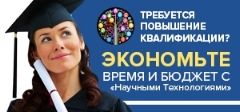Seksembayeva Manara Anuarovna (L. N. Gumilyov Eurasian national University)
Tashatov Nurlan Nurkenovich (candidate of physical and mathematical Sciences, associate Professor, L. N. Gumilyov Eurasian national University)
Ovechkin Gennady Vladimirovich (doctor of technical Sciences, Professor, Ryazan state radio engineering University)
| |
The article deals with convolutional codes with a given end bit combination (TBC) and Viterbi decoding in a Rayleigh channel with adaptive Gaussian noise. Simulation modeling of the information transmission system using convolutional correction codes and their decoding using the Viterbi method is demonstrated. A linear equalizer with RLS algorithms and a Gain signal amplifier were also used to improve the system's noise immunity. The model was developed using the Matlab software package using the Simulink package. The main indicator of performance of any communication system – the error probability-is investigated and calculated, and graphs of the error probability dependences on the signal-to-noise ratio (SNR) are constructed. The results obtained can be applied to the selection of an effective type of modulation and a method of noise-tolerant coding in communication systems.
Keywords:Rayleigh channel, bit error probability, convolutional codes, Viterbi decoding, intersymbol interference.
|
|
| |
|
Read the full article …
|
Citation link:
Seksembayeva M. A., Tashatov N. N., Ovechkin G. V. Investigation of the probability of bit error in the Rayleigh radio channel in SSO mode when using convolutional correction codes // Современная наука: актуальные проблемы теории и практики. Серия: Естественные и Технические Науки. -2020. -№12. -С. 118-125 DOI 10.37882/2223-2966.2020.12.34 |
|
|






